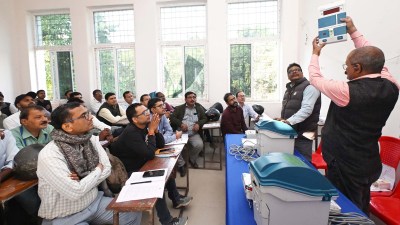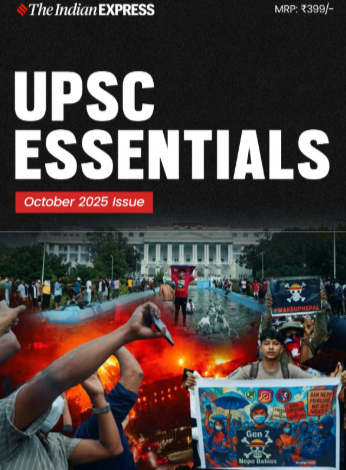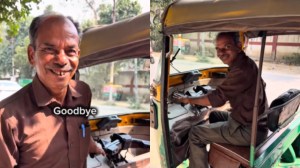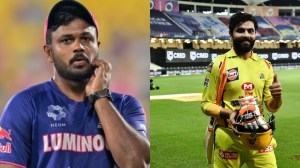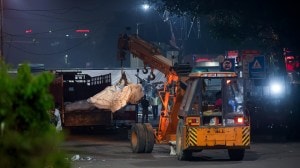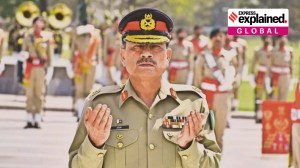
Preliminary Examination: Current events of national and international importance.
Mains Examination: General Studies-II: India and its neighbourhood- relations.
What’s the ongoing story: Prime Minister Narendra Modi is in Bhutan to attend the 70th birthday celebrations of the fourth king of Bhutan, Jigme Singye Wangchuck, the father of the incumbent king, Jigme Khesar Namgyel Wangchuck.
Key Points to Ponder:
— What is India’s ‘neighbourhood first’ policy?
— What is the history of India-Bhutan relations?
Story continues below this ad
— What are the areas of cooperation (hydroelectricity, tourism, economic) between India and Bhutan?
— Read about the ‘Operation All Clear’.
— What is the strategic significance of Bhutan for India?
— Read about the Punatsangchhu-II hydroelectric project.
— What are the geopolitical implications of India’s continued strategic support to Bhutan in light of China’s expanding influence in the Himalayas?
Key Takeaways:
— Before his departure, PM Modi said in a statement, “India and Bhutan enjoy exemplary ties of friendship and cooperation, rooted in deep mutual trust, understanding, and goodwill. Our partnership is a key pillar of our Neighbourhood First Policy and a model for exemplary friendly relations between neighbouring countries.
 Prime Minister Narendra Modi being welcomed during an event to mark the 70th birthday celebrations of the fourth king of Bhutan Jigme Singye Wangchuck, in Thimphu, Bhutan. (@MEAIndia/X via PTI Photo)
Prime Minister Narendra Modi being welcomed during an event to mark the 70th birthday celebrations of the fourth king of Bhutan Jigme Singye Wangchuck, in Thimphu, Bhutan. (@MEAIndia/X via PTI Photo)
— Popularly known as K4, Jigme Singye Wangchuck became the king of Bhutan — ‘Druk Gyalpo’, or the Dragon King in Dzongkha language — in 1972 at the age of 16, when his father, King Jigme Dorji Wangchuck, passed away.
Story continues below this ad
— In his tenure of over 30 years, K4 interacted with 12 Indian Prime Ministers, from Indira Gandhi to Rajiv Gandhi to Atal Bihari Vajpayee to Dr Manmohan Singh, till he abdicated the throne in 2006 for his son. He also took the bold step of converting the hereditary monarchy to a constitutional monarchy and turning Bhutan into a democracy by 2008.
— When Jigme Singye Wangchuck ascended the throne as a teenager, he did not come unprepared. His father had appointed him as the Chairman of the Planning Commission in 1971, which planned and coordinated Bhutan’s five-year plans.
— These plans had been launched with the help of Prime Minister Jawaharlal Nehru in 1961, modelled on India’s Five-year Plans.
— Thus, Jigme Singye’s first official role not only gave him an exposure to governance, it also made him understand the Indian government’s financial support and the intricacies of the discussions on hydro-power projects then underway between the two countries. He also developed a good rapport with Indira Gandhi.
Story continues below this ad
— In 1974, he took the decision of pegging the Bhutanese currency to Indian rupee in consultation with Indira Gandhi. Indian officials say that he oversaw the introduction of the Ngultrum (Bhutanese currency) and kept it pegged 1:1 to the Indian rupee, minimising foreign exchange risks and making day-to-day trade with India seamless.
— Very early, he took the call to strengthen Bhutan’s relationship with India and decided to be in constant touch with key stakeholders — important leaders of Assam, West Bengal and Odisha, and senior government officials in Delhi.
— Besides deepening ties with India, he also engaged with the world. While Bhutan became a member of the UN in 1971, under his reign, diplomatic ties were developed with Bangladesh (1973), Kuwait and Nepal (1983), Maldives (1984), Denmark, Norway, Sweden, Switzerland and Netherlands (1985), Japan and Finland (1986), South Korea and Sri Lanka (1987), Austria (1989), Thailand (1991), Bahrain (1992), Singapore and Australia (2002) and Canada in 2003.
— He also coordinated with Rajiv Gandhi as SAARC was established, and went to Dhaka in 1985 as one of the founding members. This made a big difference to Bhutan’s image.
Story continues below this ad
— Under Jigme Singye, cooperation with India on hydro-power projects really took off, which has proved a success for both countries.
— Jigme Singye also helmed security cooperation with India in flushing out militants from Bhutanese soil in 2003-04, when Vajpayee was PM.
— While K4 abdicated the throne in 2006, he negotiated with Manmohan Singh on the India-Bhutan Friendship Treaty of 2007, which upgraded the 1949 India-Bhutan Treaty of Friendship to reflect modern realities.
— The 1949 treaty had said that Bhutan would be guided by India in conducting its external affairs. Bhutan’s democratic transition paved the way to replace this clause with a modern mutual-cooperation framework in the 2007 agreement.
Story continues below this ad
From Politics Page: In Bhutan, PM unveils hydel project: Energy pillar of ties
— India and Bhutan are connected not just by borders but also by cultures, Prime Minister Narendra Modi said Tuesday as he arrived in the Himalayan nation for a two-day visit.
— Modi held talks with Bhutan king Jigme Khesar Namgyal Wangchuck. They inaugurated the 1,020 megawatt Punatsangchhu-II hydroelectric project developed jointly by India and Bhutan.
— The two sides agreed on an “understanding on the resumption of work on the main dam structure of 1,200 MW Punatsangchhu-I Hydroelectric Project”, according to a statement by the Ministry of External Affairs.
Story continues below this ad
— It was decided that land would be granted in Varanasi for a Bhutanese temple/monastery and a guest house.
Other Important Articles Covering the same topic:
📍India-Bhutan story offers lessons for managing asymmetric relationships
📍Bhutan’s unique position in India’s regional strategy
UPSC Mains Practice Question Covering similar theme:
What role does hydropower play in the India-Bhutan economic partnership? In what ways does India’s investment in Bhutan’s renewable energy ambitions contribute to its own sustainability goals?
Syllabus:
Preliminary Examination: Current events of national importance, Polity and Governance.
Story continues below this ad
Mains Examination: General Studies-II: Constitution of India —historical underpinnings, evolution, features, amendments, significant provisions and basic structure. Separation of powers between various organs dispute redressal mechanisms and institutions. Statutory, regulatory and various quasi-judicial bodies.
What’s the ongoing story: The Supreme Court’s hearing of petitions challenging the Tribunals Reforms Act, 2021, saw sharp exchanges last week, bringing into focus the long-running confrontation between the judiciary and the executive over the control and administration of tribunals.
Key Points to Ponder:
— What is the doctrine of separation of powers?
— What are tribunals?
— What are the constitutional provisions related to the Tribunals?
— Know about the Tribunals Reforms Act, 2021.
— What are the concerns related to Tribunals Reforms Act, 2021?
— What is meant by “legislative overruling” of a judicial verdict?
— How delays in tribunal appointments affect justice delivery in India?
Story continues below this ad
— What steps should be taken to ensure independence and efficiency of tribunals while maintaining executive accountability?
Key Takeaways:
— On Thursday (November 6), a bench led by Chief Justice of India (CJI) BR Gavai expressed strong displeasure at the Centre’s request for an adjournment in the case. Calling the move “very unfair to the Court”, the CJI noted that Attorney General R Venkataramani, representing the government, had been accommodated twice before.
— The ongoing case has impacted tribunals across the country. Tribunals are quasi-judicial bodies set up to provide speedy and specialised resolution of disputes in areas ranging from taxation and corporate law to administrative matters, thereby reducing the caseload on other courts.
— In September 2021, the Madras Bar Association (MBA) challenged the constitutional validity of the Tribunals Reforms Act, calling it a direct attempt at “legislative overruling” of a Supreme Court judgment and claiming that it undermined the independence of the judiciary.
— The challenge centred on provisions of the Act that are identical to those of an earlier ordinance, which the Supreme Court had struck down in July 2021. The most contentious was fixing the term of office for tribunal members at four years and setting the minimum age for their appointment at 50 years.
— The association argued that by re-enacting the very same provisions that the court found unconstitutional, Parliament nullified a judicial verdict without removing the legal basis or “defect” pointed out by the court. This, it contended, violates the basic principles of judicial independence and separation of powers.
— The case is the latest chapter in a legislative and judicial back-and-forth that began in 2017 with the Finance Act, which empowered the Centre to frame rules for tribunals. The rules notified by the government were struck down by a Constitution bench of the Supreme Court in the Rojer Mathew case in 2019 for undermining judicial independence.
— When the Centre notified a new set of rules in 2020, they were again challenged by the MBA. In that case, the Supreme Court recommended several modifications — including a five-year tenure for tribunal members to ensure their independence. It argued that a shorter term would discourage meritorious candidates and increase executive interference.
— The petitioners, led by the MBA, argued that a four-year tenure makes members of tribunals insecure and susceptible to executive pressure, especially if they hope to be reappointed. They also contended that the 50-year age limit arbitrarily excludes successful younger lawyers from consideration, even though a person can become a High Court judge at a younger age.
— The Union government, in its counter-affidavit filed before the court, said that the age limit ensures that candidates have sufficient experience and that a four-year term, combined with the possibility of reappointment, provides adequate security.
— The standoff over appointments and service conditions has caused long delays in filling tribunals’ vacancies.
— The Supreme Court itself has previously observed that the delays in appointments have left tribunals “virtually defunct”.
Other Important Articles Covering the same topic:
📍What is the Doctrine of Separation of Powers?
Previous year UPSC Mains Question Covering similar theme:
How far do you agree with the view that tribunals curtail the jurisdiction of ordinary courts? In view of the above, discuss the constitutional validity and competency of the tribunals in India? (UPSC CSE 2018)
POLITICS
Syllabus:
Preliminary Examination: Current events of national and international importance.
Mains Examination: General Studies-III: Science and Technology- Achievements of Indians in science & technology; indigenization of technology and developing new technology; Awareness in the fields of IT and space.
What’s the ongoing story: ISRO conducts ‘integrated main parachute airdrop test’ for the Gaganyaan mission at Babina Field Firing Range in Jhansi, Uttar Pradesh. The test, held on November 3, was designed to verify the crew module’s stability in the event of a delay in the deployment of one of its main parachutes.
Key Points to Ponder:
— What is Gaganyaan mission?
— What is the Gaganyaan crew module?
— What is a drogue parachute?
— What is the Integrated Air Drop Test?
— Which countries have carried out manned missions to space?
— What are the major missions of ISRO that would aid in the success of the Gaganyaan mission?
— India is cooperating with which agencies for the success of the manned mission?
— Know about the major achievements of the ISRO
— What are Gaganyaan Analog Experiments (Gyanex)?
Key Takeaways:
— The experiment used an IL-76 aircraft from the Indian Air Force, which carried a 7.2-tonne (6.5-metric-tonne) capsule mass simulator. The aircraft took off from the Babina Field Firing Range in Uttar Pradesh and released the dummy capsule from an altitude of 2.5 kilometers, triggering the deployment sequence of the Gaganyaan parachute system.
— An air drop test recreates the final leg of a spacecraft’s journey back to Earth. An aircraft or helicopter drops the spacecraft from a height to test various systems under different circumstances. These include the deployment of the parachute system if the mission is aborted mid-flight, system performance when one parachute fails to open, and the spacecraft’s orientation and safety during splashdown.
— According to ISRO, the Gaganyaan crew module employs a complex parachute system consisting of 10 chutes: two that detach the compartment’s protective cover, two drogue chutes that stabilise and slow the capsule, and three pilot chutes that deploy the three main parachutes responsible for the majority of the deceleration.
 ISRO plans to conduct three uncrewed test flights of the capsule, each carrying Vyomitra—a data-gathering half-humanoid robot whose name means “space friend” in Sanskrit. (Image: ISRO)
ISRO plans to conduct three uncrewed test flights of the capsule, each carrying Vyomitra—a data-gathering half-humanoid robot whose name means “space friend” in Sanskrit. (Image: ISRO)
— This test was meant to validate the parachute system even in possible extreme scenarios. The scenario chosen for the test was an “asymmetric disreefing” — where one of the two main parachutes unfurls completely slightly later than the other one. To avoid sudden jerks as the parachutes deploy on the astronauts’ journey back to the earth, the parachutes open slowly in a step by step process known as reefed inflation.
— Reefing essentially limits how much the parachute can open, following which disreefing at a scheduled time allows the parachute to open up completely. The disreefing is done using a pyro device.
— The test saw the deployment of a drogue parachute, followed by two main parachutes, one of which unfurled a little after the first. The test was successful in demonstratingstructural integrity and load distribution even in this extreme scenario, according to the ISRO student.
— Several major milestones remain before the first crewed Gaganyaan mission to low Earth orbit. ISRO plans to conduct three uncrewed test flights of the capsule, each carrying Vyomitra—a data-gathering half-humanoid robot whose name means “space friend” in Sanskrit.
— If these tests proceed as scheduled, ISRO officials anticipate that India’s first astronauts could embark on their historic mission in early 2027.
Do You Know:
— Announced in 2018, Gaganyaan is one of India’s most ambitious space programmes. It is India’s maiden human spaceflight mission that was originally scheduled for 2022 but is now expected to happen in early 2027. A successful execution of this mission would put India in the company of the US, Russia and China.
— As stated on the ISRO website, the short-term goal is to demonstrate human spaceflight to Low Earth Orbit, while the long-term goal is to lay the foundation for a “sustained Indian human space exploration programme”. Success in its ultimate objective — proving that India is capable of indigenously developing this complex technology — would be a huge boost for ISRO.
— Group Captain Prasanth Balakrishnan Nair, Group Captain Ajit Krishnan, Group Captain Angad Pratap, and Wing Commander Shubhanshu Shukla are India’s astronauts-designate for Gaganyaan.
— In preparation for sending humans to space, Indian research agencies are working on a series of “analog experiments” that will inform the country’s own astronaut protocols.
— These experiments will also help formulate the under-development psychological selection criteria for future astronauts, and develop training modules to prepare candidates for isolation, stress, and high-performance teamwork.
— An analog mission is essentially an on-ground simulation of activities astronauts will have to carry out in space.
— The Gaganyaan Analog Experiments (Gyanex) will see India’s first astronaut designates, along with other defence and research personnel, live in a confined crew module and space station. Participants will follow the same routine as astronauts in space, complete with carrying out scientific experiments.
— During the period of the experiment, participants confined in a static mock simulator —essentially, a model of the spacecraft — would only have access to things that they would in space. They will also consume the same food that has been developed by the Defence Research and Development Organisation for space missions.
Other Important Articles Covering the same topic:
📍What the success of Gaganyaan could mean for Indian science
📍Explained: How India is simulating space on Earth to write its own astronaut protocols
Previous year UPSC Prelims Question Covering similar theme:
(1) Consider the following statements: (UPSC CSE 2016)
The Mangalyaan launched by ISRO
1. is also called the Mars Orbiter Mission
2. made India the second country to have a spacecraft orbit the Mars after USA
3. made India the only country to be successful in making its spacecraft orbit the Mars in its very first attempt
Which of the statements given above is/are correct?
(a) 1 only
(b) 2 and 3 only
(c) 1 and 3 only
(d) 1, 2 and 3
Previous year UPSC Mains Question Covering similar theme:
Discuss India’s achievements in the field of Space Science and Technology. How the application of this technology has helped India in its socio-economic development? (UPSC CSE 2016)
Syllabus:
Preliminary Examination: Current events of national and international importance
Mains Examination: General Studies-II: Important International institutions, agencies and fora- their structure, mandate
General Studies-III: Conservation, environmental pollution and degradation, environmental impact assessment
What’s the ongoing story: Stressing that lack of adequate climate finance continued to be the biggest stumbling block in enhancing global climate action, India Tuesday once again called for full implementation of a key finance provision in the Paris Agreement which has been ignored by the developed countries.
Key Points to Ponder:
— What are the climate finance concerns raised by the developing countries?
— Why is India emphasizing on the need for a universally acceptable definition of climate finance?
— What are the key aspects of the Paris Agreement?
— What were the major outcomes of COP29 related to climate finance?
— Has the USA pulled out of the UNFCCC?
— What is COP?
Key Takeaways:
— In two separate statements made on behalf of the BASIC countries (Brazil, South Africa, India, China) and Like-Minded Developing Countries (LMDCs) grouping at the COP30 climate meeting in Belem, Brazil, India emphasised the need for agreeing on a clear and universally acceptable definition of climate finance, and called for scaled-up financial flows for adaptation.
— Importantly, it also demanded that Article 9.1 of the Paris Agreement, which states that developed countries “shall provide financial resources” to developing countries, be implemented in full.
— This demand, on behalf of a large number of developing countries, came just a day after Brazil managed to convince these nations not to press for the inclusion of this issue in the official agenda of the conference. Article 9.1 has emerged as one of the key issues for the developing countries in the last few months.
— These countries have been maintaining that the comprehensive finance agreement reached in Baku, Azerbaijan, last year had overlooked this provision of the Paris Agreement.
— The Paris Agreement puts an obligation on the developed nations to both “provide” finance (Article 9.1) as well as “take the lead in mobilising climate finance” (Article 9.3). In the finance deal reached in Baku last year, the developed countries had agreed to collectively mobilise a sum of US$ 300 billion a year from 2035.
— The developing countries, however, had been demanding a sum of $1.3 trillion a year, and were deeply disappointed and angry with the deal.
— Brazil said it would create other spaces in the conference to raise these issues, and offered to hold a special stocktake session on Wednesday where all these issues could be discussed in detail.
— For a country whose leadership has pulled out of the Paris Agreement and turned climate-sceptic under President Donald Trump, it is perhaps no surprise that the United States has almost no presence at the COP30 climate conference in Belem, Brazil.
— As the world’s largest historical emitter of greenhouse gases, and also the country with great financial, scientific and technological capability, the United States has both the responsibility and the capability to take the lead in the fight against climate change.
— But under Trump, for the first time, the US seems to have decided to do a no-show at COP30. The provisional list of country delegates released by the organisers, and published by UK publication Carbon Brief, has no names from the US.
— This annual two-week event is a conference of the parties (COP) to the UN Framework Convention on Climate Change (UNFCCC), the 1994 mother agreement which, as the name suggests, lays down the broad principles for global action on climate change.
— Discussions at COP yielded two operational agreements, the Kyoto Protocol in 1997 and the Paris Agreement in 2015, which serve as the implementing instruments.
— The United States has pulled out of the Paris Agreement but is still a party to the UNFCCC. It never ratified the Kyoto Protocol and thus did not become a party to that. In Belem, the US could have participated in the proceedings of UNFCCC but not the Paris Agreement.
— The United States still accounts for over 11 per cent of annual global emissions. There is no way the world can achieve its emission reduction targets without a significant US contribution.
— A bigger impact is likely to be on climate finance flows. The United States still has unparalleled influence over channelisation of global finance. It controls global financial institutions and multilateral agencies, while also housing some of the biggest corporates.
— A less-than-enthusiastic US could result in a situation where additional financial resources would be even more difficult to mobilise.
Do You Know:
— The Paris Agreement is an international accord that was adopted by nearly every country in 2015 to address climate change and its adverse effects. Its primary goal is to substantially reduce greenhouse gas (GHG) emissions in a bid to limit global warming in this century to “well below” 2 degrees Celsius above pre-industrial levels while pursuing the means to curb warming to 1.5 degrees.
— The treaty also requires all Parties (countries which have joined the agreement) to state every five years what they are doing to tackle climate change — what is known as their nationally determined contribution (NDC).
Other Important Articles Covering the same topic:
📍Argentina considering leaving the Paris Agreement: What does it mean?
📍COP 30 is a moment for action, not aspiration
Previous year UPSC Prelims Question Covering similar theme:
(2) With reference to the Agreement at the UNFCCC Meeting in Paris in 2015, which of the following statements is/are correct? (UPSC CSE 2016)
1. The Agreement was signed by all the member countries of the UN and it will go into effect in 2017.
2. The Agreement aims to limit the greenhouse gas emissions so that the rise in average global temperature by the end of this century does not exceed 2°C or even 1.5°C above pre-industrial levels.
3. Developed countries acknowledged their historical responsibility in global warming and committed to donate $ 1000 billion a year from 2020 to help developing countries to cope with climate change.
Select the correct answer using the code given below.
(a) 1 and 3 only
(b) 2 only
(c) 2 and 3 only
(d) 1, 2 and 3
Previous year UPSC Mains Question Covering similar theme:
Discuss global warming and mention its effects on the global climate. Explain the control measures to bring down the level of greenhouse gases which cause global warming, in light of the Kyoto Protocol, 1997. (UPSC CSE 2022)
Syllabus:
Preliminary Examination: Current events of national importance, Indian Polity and Governance-Constitution.
Mains Examination: General Studies-II: Salient features of the Representation of People’s Act, Constitution of India — features, significant provisions and basic structure. Constitution of India — features, amendments, significant provisions and basic structure.
What’s the ongoing story: Expressing concern that making the voters’ list available in machine-readable format may compromise privacy and expose it to mining by third parties, the Supreme Court Tuesday sought to know if each voter can be provided a password access that will allow them to see only their individual data.
Key Points to Ponder:
— What is right to privacy?
— Read about the K S Puttaswamy judgment.
— What is Special Intensive Revision (SIR)?
— What is the purpose of conducting the SIR?
— What is the legal backing for conducting SIR?
— What are the concerns related to SIR?
— What are the privacy risks involved in publishing voters’ lists in digital or machine-readable formats?
— Read about the Election Commission of India, its powers and functions.
— What steps should be taken to ensure both transparency and privacy while managing electoral rolls?
Key Takeaways:
— “It prejudices per se, a data available at large, for mining by irrespective of the individual, any agency. And to that extent,” it raises “issues of individual privacy, issues of collective protection of data of Indian citizens. This is not adversarial. It has polycentric impact,” said Justice Joymalya Bagchi, who was part of a two-judge bench hearing petitions challenging the Special Intensive Revision (SIR) of electoral rolls in different states.
— Justice Bagchi said this as Advocate Prashant Bhushan appearing for NGO Association for Democratic Rights (ADR), one of the petitioners, submitted the EC was refusing to provide the 2003 voters’ list in machine-readable form. He said giving the rolls in machine-readable format will not cause any prejudice. The counsel told the bench presided by Justice Surya Kant that machine readability of any list does not allow somebody to “manipulate” that list.
— To the submission that voters would otherwise have to go through the entire list to find their details, Justice Bagchi said, “What you may suggest, and this we are making a very generic suggestion even for the EC to consider that the individual may have a password to access the data. That is how the individual can verify his data on the encrypted database of EC, and thereby respond to the queries of EC in the course of SIR. It’s a question of debating on this and finding out the best possible solution. We want you to deliberate on it and give us your considered view.” — The court also endorsed Bhushan’s suggestion that the EC should use deduplication software to weed out duplicate names. “That’s a good suggestion. There should be no problem with that,” said Justice Surya Kant while seeking the commission’s response to it.
Do You Know:
— Article 324(1) of the Constitution gives the ECI the power of “superintendence, direction and control of the preparation of the electoral rolls for, and the conduct of” elections to Parliament and state legislatures.
— Under Section 21(3) of The Representation of the People Act, 1950, the ECI “may at any time… direct a special revision of the electoral roll for any constituency or part of a constituency in such manner as it may think fit”.
— The Registration of Electors’ Rules, 1960, says the revision of rolls can be carried out “either intensively or summarily or partly intensively and partly summarily, as the [ECI] may direct”. In an intensive revision, the electoral roll is prepared afresh; in a summary revision, the roll is amended.
— Special summary revisions take place every year, and the electoral roll is updated before each Lok Sabha and state Assembly election. Intensive revisions have been carried out in 1952-56, 1957, 1961, 1965, 1966, 1983-84, 1987-89, 1992, 1993, 1995, 2002, 2003 and 2004.
Other Important Articles Covering the same topic:
📍Knowledge nugget of the day: Right to Privacy
Previous year UPSC Prelims Question Covering similar theme:
(3) Consider the following statements: (UPSC CSE 2017)
1. The Election Commission of India is a five-member body.
2. The Union Ministry of Home Affairs decides the election schedule for the conduct of both general elections and bye-elections.
3. Election Commission resolves the disputes relating to splits/mergers of recognised political parties.
Which of the statements given above is/are correct?
(a) 1 and 2 only
(b) 2 only
(c) 2 and 3 only
(d) 3 only
ECONOMY
Syllabus:
Preliminary Examination: Current events of national and international importance
Mains Examination: General Studies-III: Indian Economy and issues relating to planning, mobilisation, of resources, growth, development and employment.
What’s the ongoing story: The Securities and Exchange Board of India (Sebi) has cautioned the general public against investing in digital gold and e-gold products. While these investment avenues have existed for several years, a steep rise in gold prices, combined with the convenience, and ease of owning gold digitally through online platforms, have led to a surge in their popularity over the last one year.
Key Points to Ponder:
— What is the role and function of SEBI?
— What is digital gold?
— How is it different from physical gold?
— What are the pros and cons of investing in digital gold?
— What are commodity derivatives?
— What are electronic gold receipts?
— What are sovereign gold bonds?
— Who is responsible for regulating the stock market in India?
Key Takeaways:
— The regulator said digital gold products are often promoted as investment alternatives to physical gold. However, they remain unregulated and do not fall under any regulatory ambit, exposing investors to heightened risks.
— Digital gold refers to buying gold without physically possessing the precious metal. The price of digital gold is linked to that of physical gold. Digital gold is created using blockchain technology. It allows investors to buy, sell and store gold electronically.
— Digital gold is easy to access and allows one to sell it quickly in case of an emergency. Unlike traditional gold purchases which require large investments, digital gold or e-gold products allow investors to start owning the precious metal with smaller amounts.
— It also eliminates the storage hassle, which is the biggest challenge associated with physical gold. Digital gold allows investors to convert their investment into physical gold whenever required. It can be converted into coins, bars, or jewellery.
— The markets regulator said it has observed that several digital and online platforms are offering investors the facility to invest in digital gold or e-gold products. These offerings are often marketed as convenient and alternatives to holding physical gold.
🚨 Counterparty Risk
Digital gold platforms operate outside regulatory oversight. Risk of default from service providers with no clearing corporation guarantees.
⚠️ Operational Risk
Platform failures, technical glitches, or business closures can lead to loss of investments with no recourse mechanisms.
❌ No Investor Protection
None of the investor protection mechanisms under securities market purview are available for digital gold investments.
📉 Default Risk
OTC ETF-like structure without regulatory backing makes digital gold vulnerable to provider defaults and business failures.
Unregulated vs Regulated Gold Investments
❌ Digital Gold
No regulationNo demat requiredHigh counterparty riskNo protection
✅ Gold ETFs/SGBs
Sebi regulatedClearing corporation backedTransparent pricingInvestor protection
Indian Express InfoGenIE
— Sebi said digital gold products are different from gold-related products regulated by it. These products are neither notified as securities nor regulated as commodity derivatives.
— According to the Sebi, digital gold operates entirely outside the regulatory purview. These gold products may entail significant risks for investors and may expose investors to counterparty and operational risks, it said.
— Experts said investors should look at investing in gold products which are regulated by the Sebi to avoid any kind of risk.
— The markets regulator has enabled investments in gold and gold related instruments through various Sebi-regulated gold products such as exchange traded commodity derivative contracts, gold ETFs offered by mutual funds and electronic gold receipts (EGRs) tradeable on stock exchanges.
— Investments in these products can be made through Sebi-registered intermediaries and are governed by the regulatory framework prescribed by the markets regulator.
— Commodity derivatives traded on regulated exchanges such as MCX and NSE are governed by stringent risk management systems, margin frameworks, and daily mark-to-market settlements.
Do You Know:
— Sovereign gold bond (SGBs) are debt securities issued by the Reserve Bank of India (RBI) on behalf of the government, with each unit denoting a gram of gold. These bonds offer the flexibility of trading in the secondary market, providing investors with the opportunity to accrue capital gains.
— The Securities and Exchange Board of India was constituted as a non-statutory body on April 12, 1988 through a resolution of the Government of India. It was established as a statutory body in the year 1992 and the provisions of the Securities and Exchange Board of India Act, 1992 (15 of 1992) came into force on January 30, 1992.
– The commodities traded on commodity exchanges in India can be classified into hard and soft commodities. Hard commodities include metals and energy while soft commodities consist of agriculture and agricultural-processed commodities.
Other Important Articles Covering the same topic:
📍Knowledge nugget of the day: Sovereign Gold Bonds Scheme (SGBs)
📍FPIs may trade in gold, silver: SEBI’s proposal, potential market impact
Previous year UPSC Prelims Question Covering similar theme:
(4) Which of the following is issued by registered foreign portfolio investors to overseas investors who want to be part of the Indian stock market without registering themselves directly? (UPSC CSE 2019)
(a) Certificate of Deposit
(b) Commercial Paper
(c) Promissory Note
(d) Participatory Note
| ALSO IN NEWS |
| Who is David Szalay, the 2025 Booker Prize winner? |
David Szalay is the Hungarian-British author who has won the prestigious 2025 Booker Prize for his profound and propulsive sixth novel, Flesh. His victory marks a significant milestone, as he is the first author of Hungarian heritage to win the award. |
| CBSE Draft: Computational-thinking skills in all subjects, foundational concepts of Artificial Intelligence |
Next academic year onwards, CBSE students, as young as those studying in Class 3, will likely find computational-thinking skills integrated in all subjects as the Board prepares to implement an AI-focused curriculum.
A draft artificial intelligence (AI) and computational thinking curriculum developed by the Central Board of Secondary Education (CBSE) for classes 3 to 12 also focuses on introducing foundational concepts of AI in the lower classes, along with advanced computational thinking and AI as compulsory subjects in classes 9 and 10, official sources said.
The curriculum is in line with the National Education Policy (NEP) 2020, which calls for the introduction of “contemporary” subjects like AI, design thinking, and holistic health in the curriculum. |
| PRELIMS ANSWER KEY |
| 1. (c) 2. (b) 3. (d) 4. (d) |
Subscribe to our UPSC newsletter. Stay updated with the latest UPSC articles by joining our Telegram channel – IndianExpress UPSC Hub, and follow us on Instagram and X.
🚨 Click Here to read the UPSC Essentials magazine for October 2025. Share your views and suggestions in the comment box or at manas.srivastava@indianexpress.com🚨



 Prime Minister Narendra Modi being welcomed during an event to mark the 70th birthday celebrations of the fourth king of Bhutan Jigme Singye Wangchuck, in Thimphu, Bhutan. (@MEAIndia/X via PTI Photo)
Prime Minister Narendra Modi being welcomed during an event to mark the 70th birthday celebrations of the fourth king of Bhutan Jigme Singye Wangchuck, in Thimphu, Bhutan. (@MEAIndia/X via PTI Photo) ISRO plans to conduct three uncrewed test flights of the capsule, each carrying Vyomitra—a data-gathering half-humanoid robot whose name means “space friend” in Sanskrit. (Image: ISRO)
ISRO plans to conduct three uncrewed test flights of the capsule, each carrying Vyomitra—a data-gathering half-humanoid robot whose name means “space friend” in Sanskrit. (Image: ISRO)

